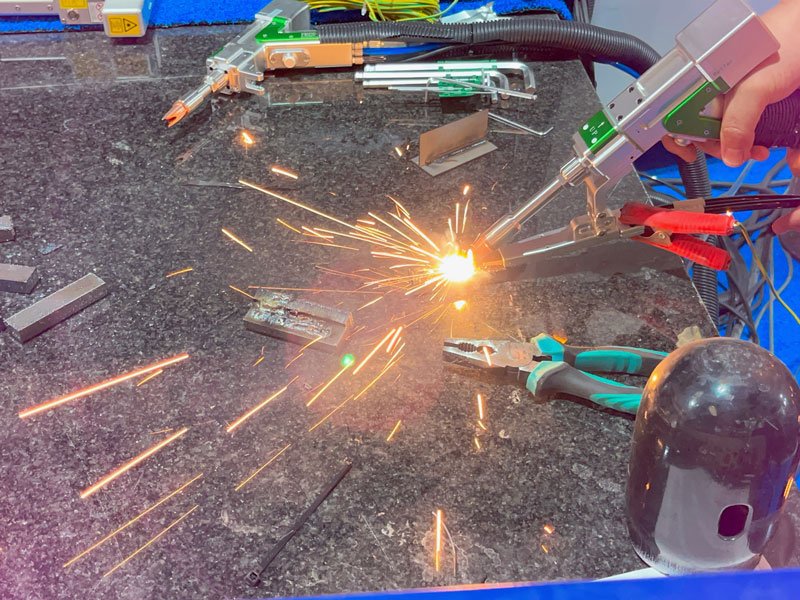Welding technology plays a crucial role as a core part of the manufacturing industry. Among many welding technologies, laser welding and MIG (metal inert gas) welding are two widely used methods. Although they share the same goal – to join metal materials – their working principles, advantages, limitations, and areas of application are quite different. This article will explore various aspects of laser welding and MIG welding in depth to help readers understand their key differences.

What is laser welding?
Laser welding is a high-precision welding technique that uses a high-energy-density laser beam as a heat source. This method allows for fast, fine welds and is suitable for applications where the quality and appearance of the butt joint are demanding.
Advantages of laser welding:
- High precision and control: Able to produce precise welds in tiny areas, ideal for processing precision components.
- Low heat input: Reduces the risk of material deformation and heat-affected zones, maintaining the material’s original properties.
- High-speed welding: Compared with traditional welding technology, laser welding is faster and improves production efficiency.
- Multi-material adaptability: Able to weld a variety of metals, even some materials that are difficult to weld by traditional methods.
What is mig welding?
MIG welding, or gas metal arc welding (GMAW), is a method of welding metal using a continuously fed electrode wire and a shielding gas. It is the most common form of welding in industrial production, especially in heavy industry and large-scale manufacturing.
Advantages of MIG welding:
- Wide applicability: Can be used on materials of various thicknesses, suitable for a variety of industrial applications.
- High efficiency: Fast welding speed is suitable for mass production environments.
- Easy to learn: The operation is relatively simple, and the learning curve is not as steep as laser welding.
- Cost-Effectiveness: Equipment and maintenance costs are relatively low, making it suitable for environments with limited budgets.

Application field
Laser welding: Due to its high precision and low heat input, it is very suitable for aerospace, electronics, micro-mechanical manufacturing, and medical apparatus industries.
MIG welding: Due to its high efficiency and good adaptability, it is widely used in shipbuilding, automobile manufacturing, building structures, and heavy machinery.
Welding characteristics
| Feature | Laser Welding | MIG Welding |
|---|---|---|
| Weld Quality | High quality, deep weld penetration, minimal distortion | Lower quality, shallower weld penetration, more distortion |
| Welding Speed | Fast | Slow |
| Welding Efficiency | High | Low |
| Welding Cost | High | Low |
| Operational Difficulty | High | Low |
| Application Scope | Thin sheets, precision parts, stainless steel, aluminum alloys | Thick plates, carbon steel, low alloy steel |
Conclusion
The choice between laser welding and MIG welding depends on specific application needs, budget constraints, material characteristics, and desired weld quality. While laser welding offers greater precision and speed, its high equipment costs and operational requirements may not be suitable for all scenarios. In contrast, MIG welding still dominates many traditional manufacturing fields due to its cost-effectiveness and strong adaptability. Understanding the pros and cons of both technologies can help companies make informed decisions about which welding method is best for their specific application.

FAQ
Which is better, laser welding or MIG welding?
Both welding methods have their advantages and disadvantages, and there is no absolute “better” option. The choice of the appropriate welding method depends on the specific application requirements.
What materials can be welded with laser welding?
Laser welding can be used to weld most metal materials, including stainless steel, aluminum alloys, titanium alloys, and copper alloys.
What materials can be welded with MIG welding?
MIG welding can be used to weld most metal materials, including carbon steel, low alloy steel, stainless steel, and aluminum alloys.
